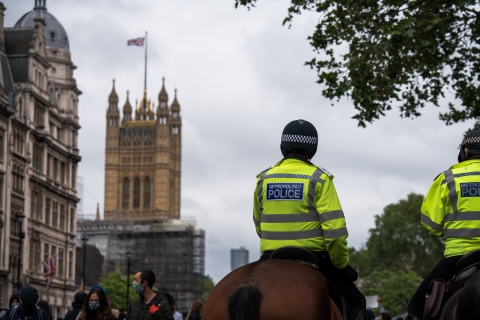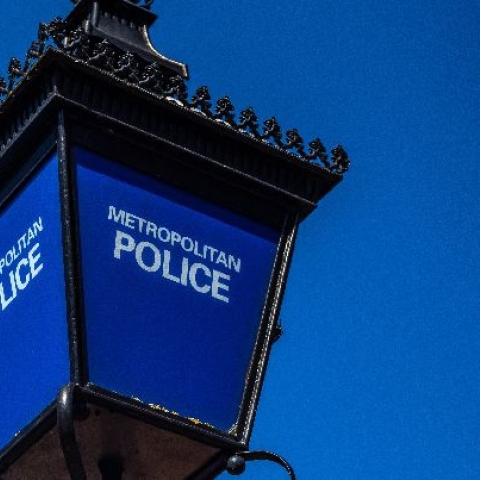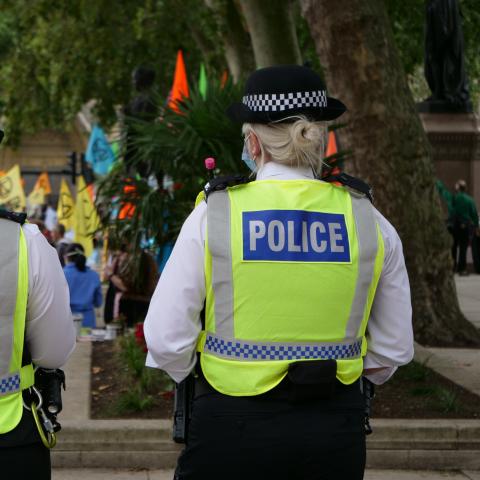

London’s police force has a deeply ingrained culture that can’t be fixed by one commissioner.
In the two weeks since an officer in London’s Metropolitan Police admitted to being a serial rapist, politicians and commentators have called for the Met to undergo “root-and-branch” reform.
Beyond the abhorrent case of the now-former police constable David Carrick, Met commissioner Mark Rowley has revealed that London currently has a damaged and ineffective police service. Rowley said that every week for the foreseeable future, many of his officers would be appearing in court in trials involving “violence against women and girls” – as defendants, not case officers.
Since the 1970s, the Met has had a series of so-called “reforming commissioners”. One was Rowley’s predecessor, Cressida Dick, the first woman to be appointed to the top job.
She had what many felt was a fairly disastrous tenure, which ended after the heavy-handed policing of the Sarah Everard vigil and the Charing Cross misogyny scandal. The mayor of London, Sadiq Khan, publicly said he had lost faith in Dick’s ability to change the toxic force culture where sexism, homophobia and misogyny seemed to be prevalent.
Being the chief of the biggest police force in the country is undoubtedly a very tough job – I think, in fact, it is an impossible one. London and its 8 million inhabitants deserve to be policed effectively, and by a respected service, but calm thought is needed about how that can be achieved.
As a criminologist, researcher of police culture and oversight, and former police officer, I care about the way our police forces are perceived by the public. I have concluded that the Met is just too big and the toxic culture is too deeply set into its foundations.
I believe we are now entitled to ask why it should not be disbanded. Rather than tinker with the branches, perhaps the root needs to be dug up, thoughtfully divided and transplanted.
A new structure
The Metropolitan Police was created in 1829, and was the first professional police force in the UK. As London grew, the area policed by the Met expanded, as did the workforce. The Met currently employs nearly 47,000 people, of whom 35,000 are police officers.
Policing in the rest of England and Wales developed in a rather haphazard way until the 1964 Police Act, through which parliament ratified the 42 other forces which exist today. These forces were each designed to cover an English county, with exceptions for larger areas such as West Midlands and Greater Manchester. These two forces have around 6,500 officers, while the county forces average around 2,500.
The Met is unique in both size and governance structure. Rather than having an elected and dedicated police and crime commissioner like every other force, the Met is jointly governed by the home secretary and the mayor of London, who often don’t see eye to eye. The Met also has unique national policing roles, leading on counter-terrorism and protecting the royal family and senior politicians.
The potential argument that it is more sensible for the whole of London to have one police force doesn’t stand scrutiny. In the middle of London, there is a separate police force – the City of London Police. They police just one square mile around St Paul’s and the Tower of London, but are fiercely independent of the Met influence, are considered effective and efficient with good performance ratings for keeping people safe and reducing crime.
A reorganisation strategy could include a single force south of the Thames and an east-west split in the north. Or, a more sophisticated arrangement where the existing forces surrounding London – Hertfordshire, Surrey, Thames Valley, Kent and Essex – absorb their neighbouring outer London boroughs. For example, Kent police could take in the boroughs of Bexley, Greenwich, Lewisham and Bromley.
The City of London police area could be expanded beyond its current anachronistic square mile to take the remaining East London boroughs. This would leave one constabulary covering roughly the area within the north and south circular roads surrounding inner London, containing about 3.8 million people.
These smaller forces would have a fresh command team, and the former Met boroughs would absorb the culture and ethical standards from outside of London. Each could then create its own identity, ethical standards and history, where fresh ideas are allowed to flourish.
Counter-terrorism responsibility could be transferred to the National Crime Agency which is where many people think it belongs anyway.
In the face of so much damage being done to public confidence, the current Met force structure should not be considered sacrosanct or immune to full-scale reform. The reputation of every force in the country is being tainted by the mismanagement and bad behaviour of one huge policing organisation.
In 1997 it would have been unthinkable to most people in Northern Ireland that the famous Royal Ulster Constabulary GC would ever be completely disbanded and replaced by a new police service with a different name, uniform, symbols and culture. But police reform was a key part of the peace process, leading to the modern police service of Northern Ireland.
Changing the culture
It is my experience talking to police officers outside London that they feel the Met has a prevailing culture of a kind of arrogance. Their criticism is that Met officers feel that they are “Policing UK PLC” and that the county forces are amateurs who should watch and learn.
This is anecdotal of course, and perhaps an unfair generalisation. But the reality is that, as illustrated by the Stephen Lawrence, Rachel Nickell and Victoria Climbie murders, the Met seems to be no better at policing than any other police force in England and Wales.
The Met also seems to be quite an inward-looking organisation. Upon the creation of regional police and detective training centres in the 1940s, every force in England and Wales (except the Met) began sending their officers to these shared centres where they would mix in a classroom for weeks with colleagues from other forces. Police officers were exposed to the high ethical standards and practices which were prevalent and commonly accepted elsewhere.
The Met, meanwhile, did all their initial police training and specialist detective training in-house. Their officers were rarely exposed to what was happening in policing elsewhere, including what sort of behaviour might be unacceptable in other forces.
Perhaps this history of insulating their staff from the rest of the police family in England and Wales contributed to the current problem. The Met’s traditions, rituals, canteen culture and ethical standards are deeply ingrained. Decades of evidence show that it will take more than a new commissioner to change it.
John Fox is a senior lecturer Police Studies, at the School of Criminology and Criminal Justice in the Faculty of Humanities and Social Sciences.
This article is republished from The Conversation under a Creative Commons Licence. Read the original article.
More The Conversation Articles...
The Conversation is an independent source of news analysis and informed comment written by academic experts, working with professional journalists who help share their knowledge with the world.
Why do so many men get away with rape? Police officers, survivors, lawyers and prosecutors on the scandal that shames the justice system
John Fox
24 November 2022
28 min read

David Carrick: the vetting processes that missed a serial rapist in the Met police
John Fox
18 January 2023
6 min read

Police officer resignations have risen by 72% in the last year – we asked former officers why
Sarah Charman
1 November 2022
5 min read

